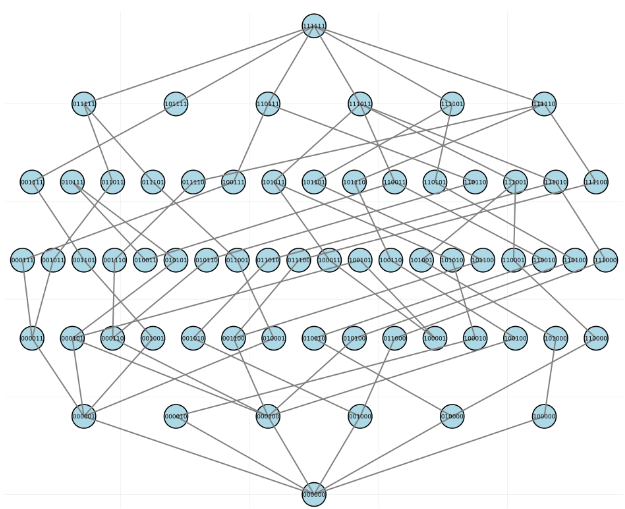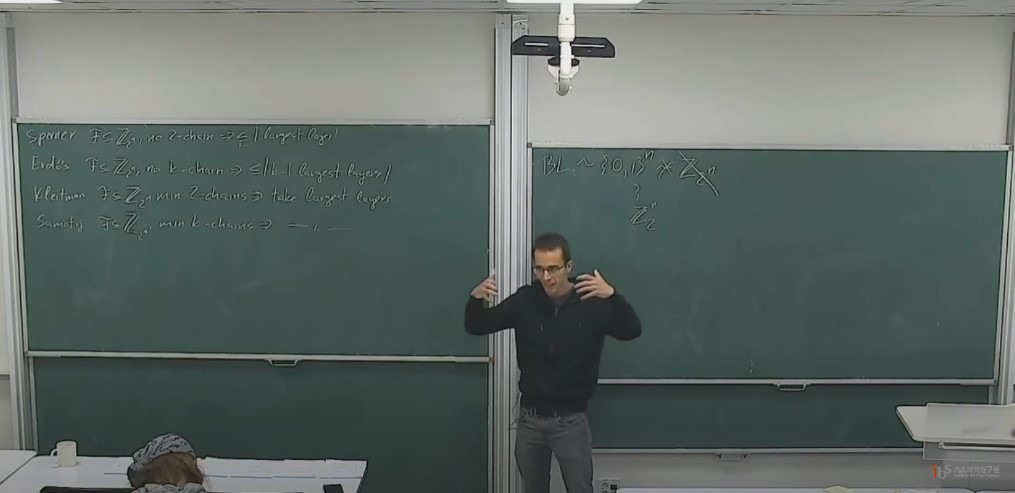Adam Zsolt Wagner
About me
I am a research scientist at Google DeepMind, working on using AI for mathematical reasoning. Until recently, I was an assistant professor of mathematics at Worcester Polytechnic Institute.
While I still mostly consider myself a mathematician, in recent years the focus of my work has heavily shifted towards finding new and fun ways to use computers in mathematics research. This includes using reinforcement learning methods so programs can learn disprove open conjectures by themselves, exploring how generative ML methods can be used to attack open problems, and other ways machine learning can be used to guide our intuition.
My full CV.
AlphaEvolve
|
AlphaEvolve: A coding agent for scientific and
algorithmic discovery [PDF] [Blog post] YouTube videos: [Stand-up Maths] [Two Minute Papers] [Machine Learning Street Talk] |
Math-AI Publications
| Proceedings of the London Mathematical Society, 2025 |
Advancing Geometry with AI: Multi-agent Generation of Polytopes [arXiv] |
| arXiv 2024 |
PatternBoost: Constructions in Mathematics with a Little Help
from AI [arXiv] |
| NeurIPS Math-AI 2023 |
Finding Increasingly Large Extremal Graphs with AlphaZero and Tabu Search [arXiv] |
| arXiv 2021 |
Constructions in combinatorics via neural networks [arXiv] Quanta article |
Selected math-AI talks with videos

Finding interesting mathematical objects with ML (NeurIPS Math-AI workshop, 2024)
We have seen that we can achieve good results in mathematics by using some very simple ML tools. In this talk, I will show you how adding just a little bit of complexity to our setups can drastically improve our results. With every extra idea we introduce, the door to the possibilities of what kinds of problems we can successfully tackle will open rapidly. By the end of the talk, we will have reached the algorithm that has successfully solved a genuinely important open problem in mathematics and complexity theory.
Watch TalkFinding counterexamples to conjectures via reinforcement learning (IPAM, 2023)
We use a simple reinforcement learning setup to find explicit constructions and counterexamples to several open conjectures in extremal combinatorics and graph theory. Amongst the conjectures we refute are a question of Brualdi and Cao about maximizing permanents of pattern avoiding matrices, and several problems related to the adjacency and distance eigenvalues of graphs. You do not need to know much about machine learning or maths to be able to follow this talk, I explain everything from the basics!
Watch TalkMath Publications
| Proceedings of the AMS 2024+ |
The extremal number of Venn diagrams [arXiv] |
| JCTB 2024 |
Intersecting families of sets are typically trivial [arXiv] |
| Electronic Journal of Combinatorics 2023 |
Balanced edge-colorings avoiding rainbow cliques of size four [arXiv] |
| JCTA 2022 |
Infinite Sperner's theorem [arXiv] |
| Random Structures & Algorithms 2022 |
Uniform chain decompositions and applications [arXiv] |
| Electronic Journal of Combinatorics 2020 |
Bounded Degree Spanners of the Hypercube [arXiv] |
| Israel Journal of Mathematics 2020 |
Nearly-linear monotone paths in edge-ordered graphs [arXiv] |
| JCTA 2020 |
Refuting conjectures in extremal combinatorics via linear programming [arXiv] |
| JCTB 2020 |
Completion and deficiency problems [arXiv] |
| Electronic Journal of Combinatorics 2020 |
The Ramsey Number of Fano Plane Versus Tight Path [arXiv] |
| Journal of Graph Theory 2020 |
Families in posets minimizing the number of comparable pairs [arXiv] |
| arXiv 2019 |
The performance guarantee of randomized perfect voting trees [arXiv] |
| European Journal of Combinatorics 2019 |
The largest projective cube-free subsets of Z_{2^n} [arXiv] |
| JCTA 2019 |
Partition problems in high dimensional boxes [arXiv] |
| Discrete Mathematics 2019 |
Turan numbers for Berge-hypergraphs and related extremal problems [arXiv] |
| arXiv 2019 |
A note on some conjectures about combinatorial models for RNA secondary structures [arXiv] |
| Electronic Journal of Combinatorics 2019 |
Monochromatic Hilbert cubes and arithmetic progressions [arXiv] |
| Combinatorics, Probability and Computing 2018 |
Tilings in randomly perturbed dense graphs [arXiv] |
| Advances in Mathematics 2018 |
Kleitman's conjecture about families of given size minimizing the number of k-chains [arXiv] |
| Discrete Applied Mathematics 2018 |
Two results about the hypercube [arXiv] |
| Bul. of the London Math. Soc. 2017 |
An improved lower bound for Folkman's Theorem [arXiv] |
| Journal of Graph Theory 2017 |
Large subgraphs in rainbow-triangle free colorings [arXiv] |
| Israel Journal of Mathematics 2017 |
On the number of union-free families [arXiv] |
| Random Structures & Algorithms 2016 |
Applications of Graph Containers in the Boolean Lattice [arXiv] |
| Recent Trends in Combinatorics 2016 |
Further applications of the Container Method [arXiv] |
| Discrete Mathematics 2015 |
Cops and Robbers on diameter two graphs [arXiv] |
| - |
Pursuit on Graphs (Master's thesis) [pdf] |
Selected math talks with videos

The largest projective cube-free subsets of $Z_{2^n}$ (IBS, 2020)
What is the largest subset of $Z_{2^n}$ that doesn’t contain a projective $d$-cube? In the Boolean lattice, Sperner’s, Erdos’s, Kleitman’s and Samotij’s theorems state that families that do not contain many chains must have a very specific layered structure. We show that if instead of $Z_{2^n}$ we work in $Z_{2^n}$, analogous statements hold if one replaces the word $k$-chain by projective cube of dimension $2^{k-1}$. The largest $d$-cube-free subset of $Z_{2^n}$, if $d$ is not a power of two, exhibits a much more interesting behaviour.
Watch Talk